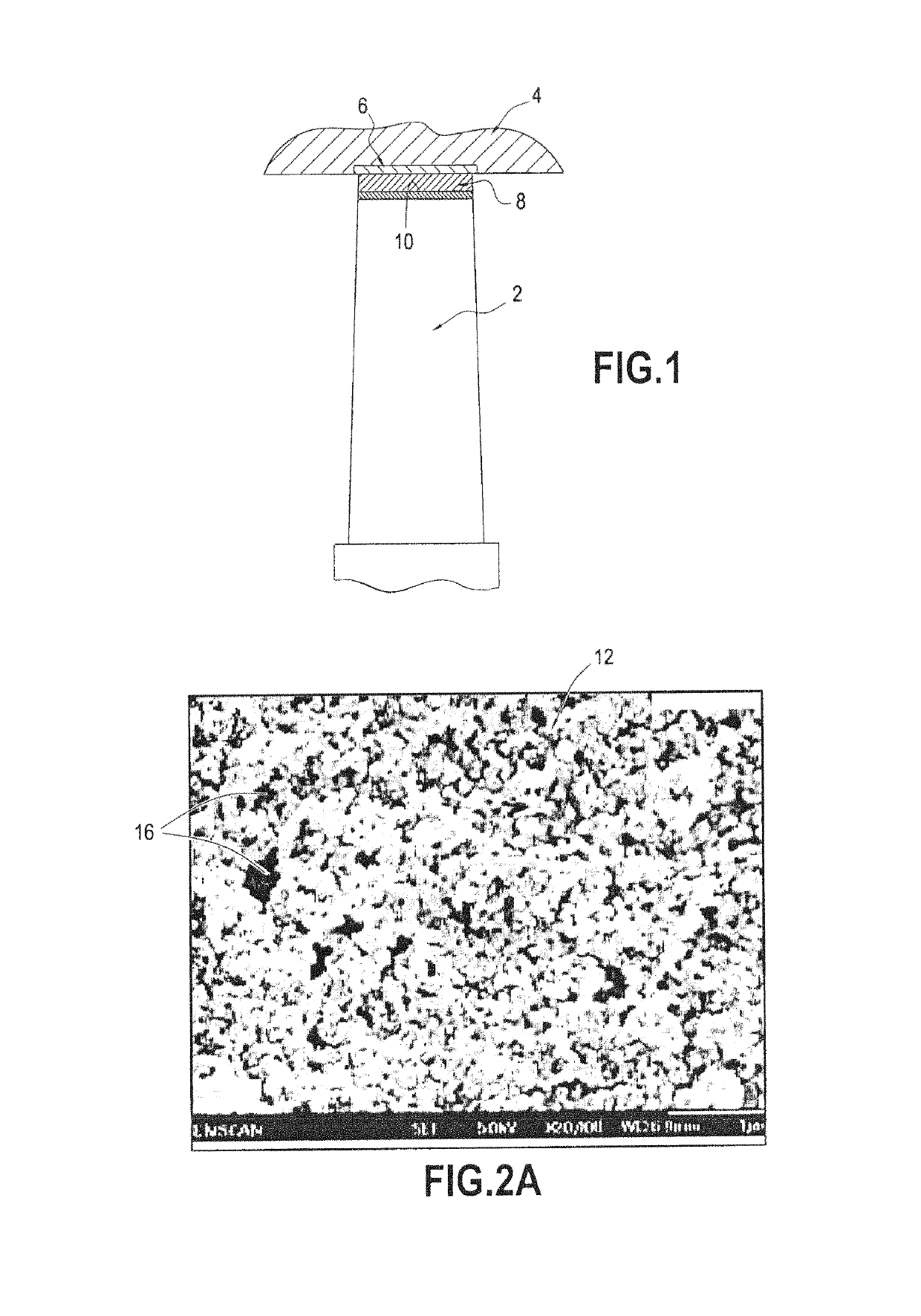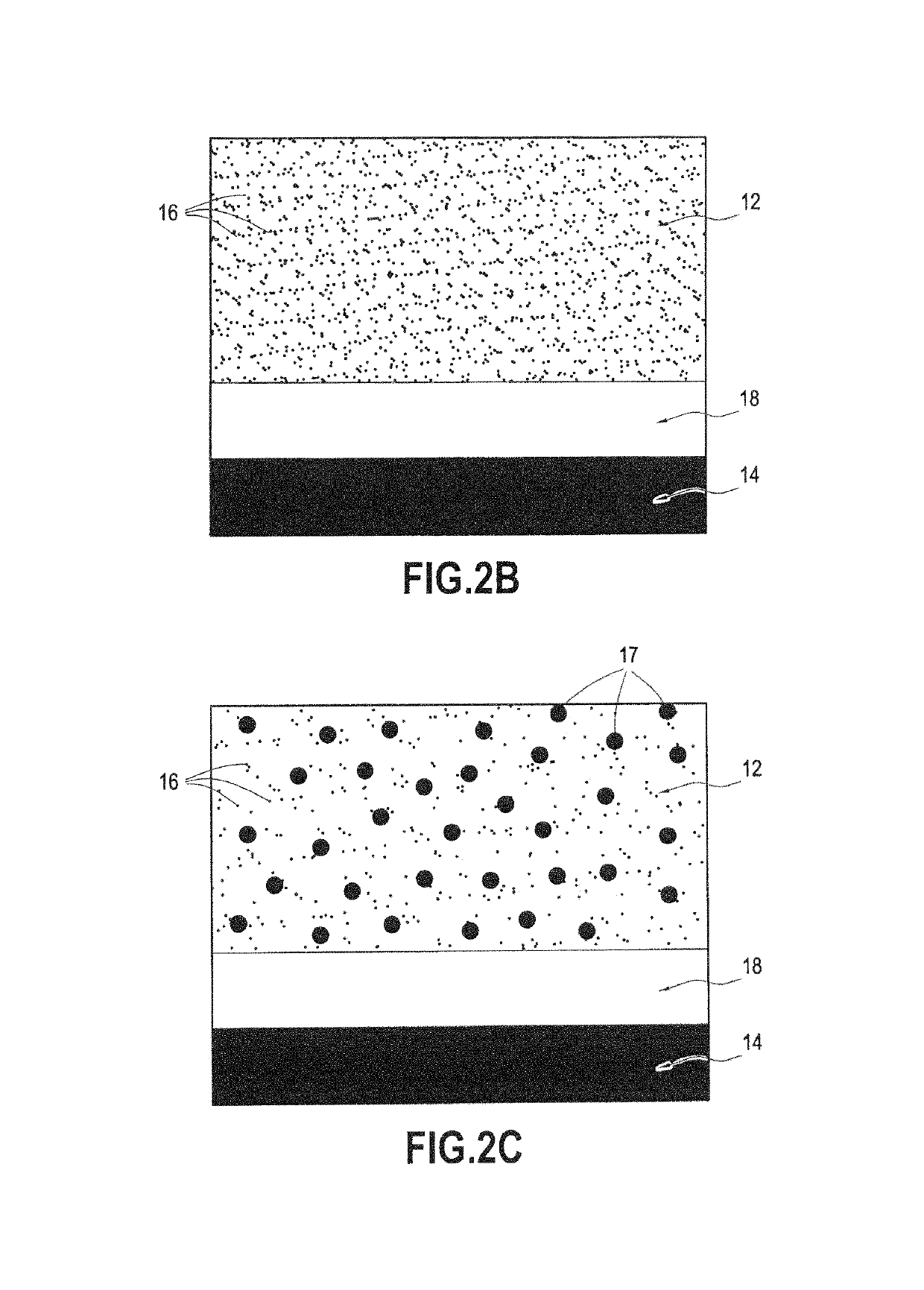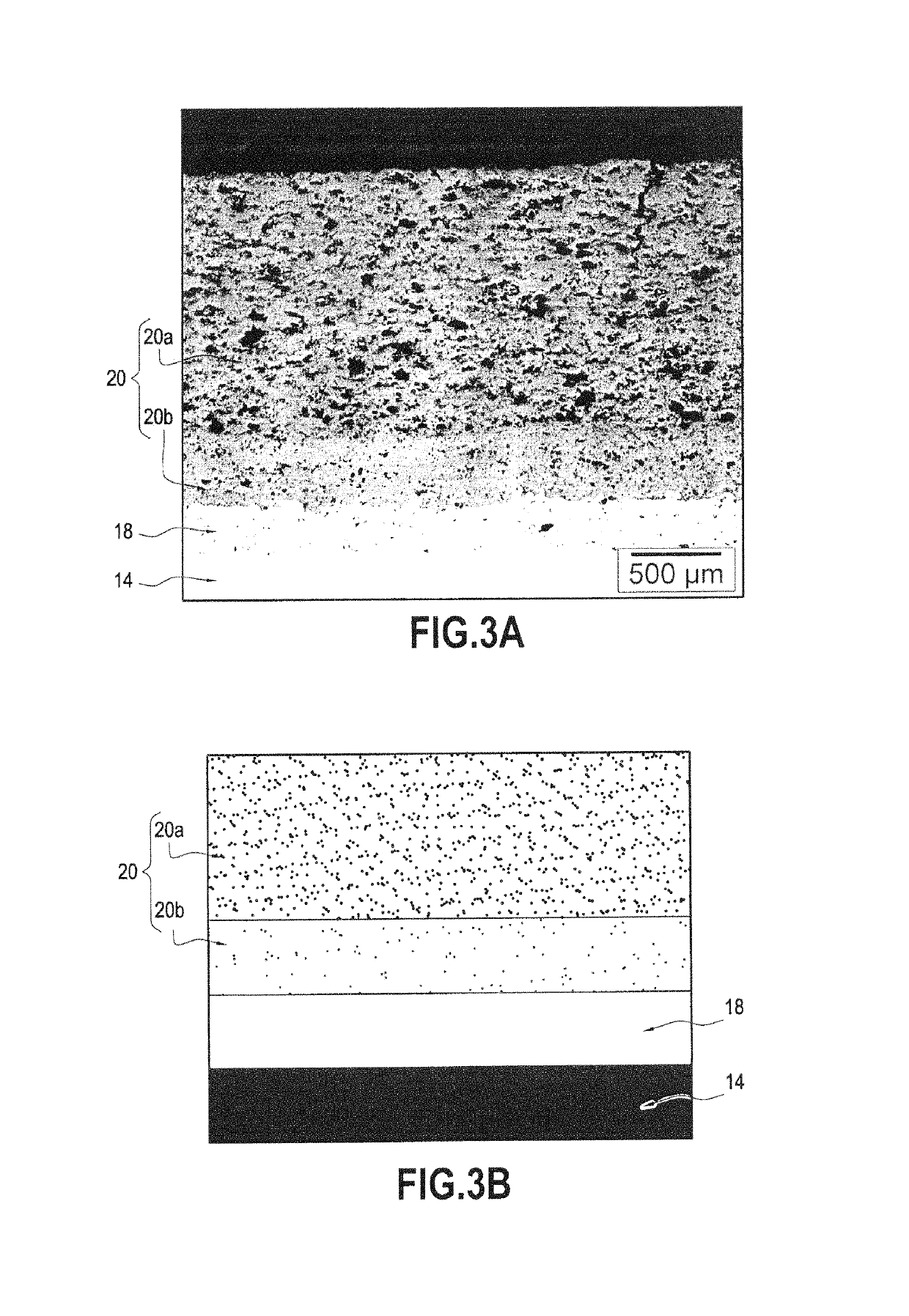Rotor-stator assembly for a gas turbine engine
a gas turbine engine and assembly technology, applied in the direction of stators, machines/engines, mechanical equipment, etc., can solve the problems of poor durability, contact between the blade tips and the facing material, and poor durability, and achieve the effect of being cheap to mak
- Summary
- Abstract
- Description
- Claims
- Application Information
AI Technical Summary
Benefits of technology
Problems solved by technology
Method used
Image
Examples
first embodiment
[0040]FIGS. 2A and 2B show a first embodiment respectively in the form of a photograph (scale: 1 μm) and in the form of a diagram, for such a layer 12 constituted mainly by zirconia and deposited on a substrate 14. In this embodiment, the porosity (where pores are represented by black dots 16) is said to be fine, i.e. it is constituted by pores of size less than or equal to 5 μm, and uniform in its distribution across the thickness of the layer. In this example, the distribution of the porosity in the layer is monomodal.
[0041]It should be observed that this layer 12 may be deposited on the substrate via a bonding underlayer 18, e.g. formed by depositing an alloy of the MCrAlY type (where M is Ni, Co, or NiCo), or depositing a platinum aluminide coating, etc.
[0042]Furthermore, in a variant of this first embodiment shown in FIG. 2C, the layer 12 of zirconia also comprises particles 17 of solid lubricant, such as for example particles of hexagonal boron nitride. Such particles make it ...
second embodiment
[0043]FIGS. 3A to 3C show a layer 20 deposited on a substrate 14 and suitable for use in constituting the abradable coating of the rotor-stator assembly.
[0044]In this second embodiment, the layer 20 is constituted by two layers 20a and 20b of zirconia having different microstructures. Thus, the layer 20a deposited beside the abrasion zone presents porosity that is high (i.e. having a void ratio lying in the range 20% to 50%), while the layer 20b deposited beside the substrate 14 presents lower porosity (of the order of 10% to 20%).
[0045]A layer is thus obtained that presents high porosity at the surface in order to act as an abradable coating and a denser underlayer beside the substrate in order to act as a thermal barrier. Such variation in porosity across the depth of the abradable coating serves to improve the resistance of the coating to thermal shocks, to improve its resistance to thermal cycles, and to increase the insulating power of the coating (it provides a thermal barrier...
third embodiment
[0049]FIGS. 4A-4B show a layer 24 deposited on a substrate 14 and suitable for use in constituting the abradable coating of the rotor-stator assembly.
[0050]In this third embodiment, the layer 24 is formed by a layer of zirconia with high porosity (i.e. having a void ratio lying in the range 20% to 50%).
[0051]Compared with the first embodiment, the distribution of porosity in the layer in this example is bimodal, i.e. the pores are shared between “fine” pores (i.e. having size less than or equal to 5 μm), and “medium” pores (i.e. having a size lying in the range 15 μm to 50 μm).
[0052]In the photograph of FIG. 4A, the pores of fine size are thus represented by black zones 26, while the pores of medium size are represented by black zones 28. It should be observed that regardless of pore size, the way the pores are distributed in the layer 24 is uniform.
[0053]Other characteristics common to the various embodiments of the layer forming the abradable coating of the rotor-stator assembly a...
PUM
| Property | Measurement | Unit |
|---|---|---|
| size | aaaaa | aaaaa |
| porosity | aaaaa | aaaaa |
| size | aaaaa | aaaaa |
Abstract
Description
Claims
Application Information
 Login to View More
Login to View More - R&D
- Intellectual Property
- Life Sciences
- Materials
- Tech Scout
- Unparalleled Data Quality
- Higher Quality Content
- 60% Fewer Hallucinations
Browse by: Latest US Patents, China's latest patents, Technical Efficacy Thesaurus, Application Domain, Technology Topic, Popular Technical Reports.
© 2025 PatSnap. All rights reserved.Legal|Privacy policy|Modern Slavery Act Transparency Statement|Sitemap|About US| Contact US: help@patsnap.com



